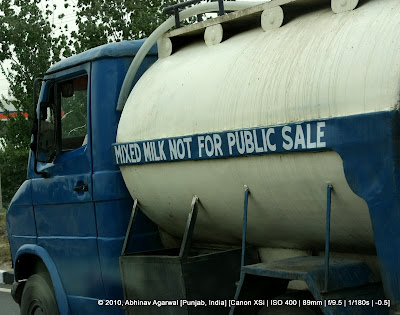Manufacturing depression: The secret history of a modern disease, by Gary Greenberg
A personal account of the industry of depression. Happiness is not a disease, but sadness evidently is, and a very profitable one for industry.
This is a depressing (ah the irony) look at the history of depression, the science behind it, the lack of science, and the rapaciousness of industry and advertising behind convincing us that we are sicker than we are. Sadness is a disease of the brain that can be cured by antidepressants. Happiness, by that line of reasoning, however is not considered a disease. The book does not cover the genuine cases of mental illnesses for which medication and treatment is necessary, which is a legitimate drawback of the book. What the book does do a great job is at illuminating the history of depression, the characters behind its evolution, and the difficulties in qualifying depression as a disease. Are each of us only "an electromolecular stew just a dash short of this or that crucial salt." [page 334]
Some excerpts from the book.
Leaving aside the obvious cases of mental illnesses, the problem with tests conducted to diagnose depression is a fallacy of logical reasoning.
... you have to assume that the patient is depressed in order for his feelings to be considered symptoms, but the symptoms are the only evidence of the depression. ... To logicians, this is known as assuming your conclusions as your premise, or begging the question. [page 129]
A total of seventy-four trials have been submitted to the Food and Drug Administration for the twelve leading antidepressants. Of these trials, only thirty-eight showed an advantage of drug over placebo. ... You wouldn't know from a Prozac ad that the drugs have failed almost half their tests, or that even their successes are well short of miraculous. ...
A 1962 amendment required that there be "substantial evidence ... consisting of adequate and well-controlled investigations .. by experts qualified by scientific training and experience" would certify the efficacy of a drug.
...
So long as the research eventually yielded evidence of efficacy, the failures would remain off the books. This is why antidepressants have been approved even though so many studies have shown them to be ineffective.
[pgs 203, 215, 216]
The randomized controlled trial (RCT) is the touchstone on which the efficacy of new drugs is tested and evaluated. However, the author points out "... that an RCT is much more suited to disproving than to proving, that it can give us probabilities, that its primary purpose is negative: to rain on an experimenter's parade..." [page 219]
The law of unintended consequences was in full display in the way the FDA was granted powers.
When the US Congress outlawed any statement "which is false and fraudulent...", "This law actually discouraged research by making ignorance a defence; falsehood is not fraud unless a company has taken the time to fogure out the truth." [page 208]
The chief scientist of Smith, Kline, and French was appointed as the first head of the FDA.What the FDA meant by efficacy was proof that a drug was effective with a particular disease. Suddenly, it was more important than ever to find an indication, the specific illness on which the drug could be tested and for which it could be approved (and advertised) as a treatment. [page 224]
The bureau obliged the industry by imposing standards for drug preparations with which only a large company processing the resources to control its supply and manufacturing processes precisely could comply. [page 207]

Adam Block, an independent researcher at Harvard estimated in 2007 more than a half million doctors' visits were inspired every year by consumer advertising of antidepressants. Using epidemiological data, he estimated that only one in fifteen of those patients was likely to be depressed, but using statistics derived from other studies, he determined that more than half of them would get a prescription, which meant, he said, that only "six percent of the increase in anti-depressant use due to [direct-to-consumer] advertising is by people who are clinically depressed." [page 277]Read excerpt via Amazon Kindle:
---
- Manufacturing Depression: The Secret History of a Modern Disease
- Manufacturing Depression
- The Truth About the Drug Companies: How They Deceive Us and What to Do About It
(Kindle edition
)
© 2011, Abhinav Agarwal. All rights reserved.






























